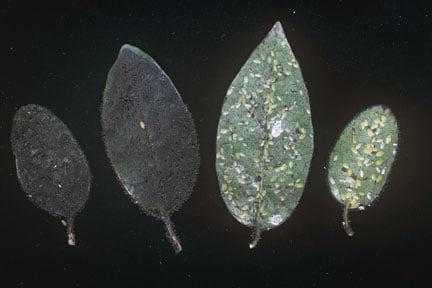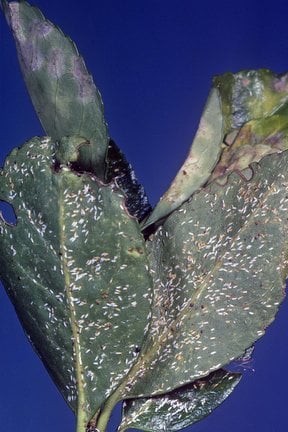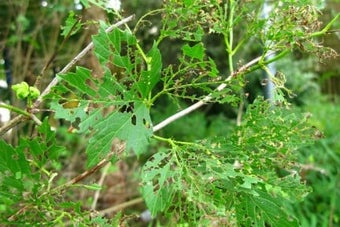
Quick facts
Common name - Viburnum scale
Scientific name - Lichtensia viburni
Plants affected - Viburnum tinus and ivy (Hedera)
Main symptom - Honeydew and sooty mould
Most active - Spring and summer
What is viburnum scale?
Scale insects are sucking true bugs belonging to several families in the Hemiptera. Typically the adults are immobile having a flattened or raised appearance, with no visible legs. They often look like a ‘scale’ on a leaf or stem, many species produce a white wax often covering egg masses. There are more than 100 species found in Britain, 26 of which have been introduced. More than 25 species can be found in gardens or on houseplants.
Viburnum scale is is only found on the foliage of Viburnum tinus and ivy (Hedera) . Adult females are flat, oval, pale yellow and up to 4mm long. Males are 2.5 mm long white and elongate oval. In May-June the females become covered with a white fluffy wax coating amongst which the eggs are laid. The crawlers hatch from the eggs in late June.
Symptoms
Apart from the presence of the insects and the white fluffy eggs masses (in spring) the main symptom is the presence of honeydew on which sooty mould often grows.
Symptoms are superficially similar to cushion scale , however that species rarely occurs on viburnum or ivy.
Management
- Where possible tolerate populations of scale insects. Well-tended healthy plants are able to tolerate light populations, although the growth of sooty mould can be unsightly
- Encourage predators in the garden, some ladybirds , parasitoid wasps and some birds will eat scale insects
- Adult scales and egg masses can be removed when seen but this may not reduce large populations
- Consider replacing plants with very large populations



















